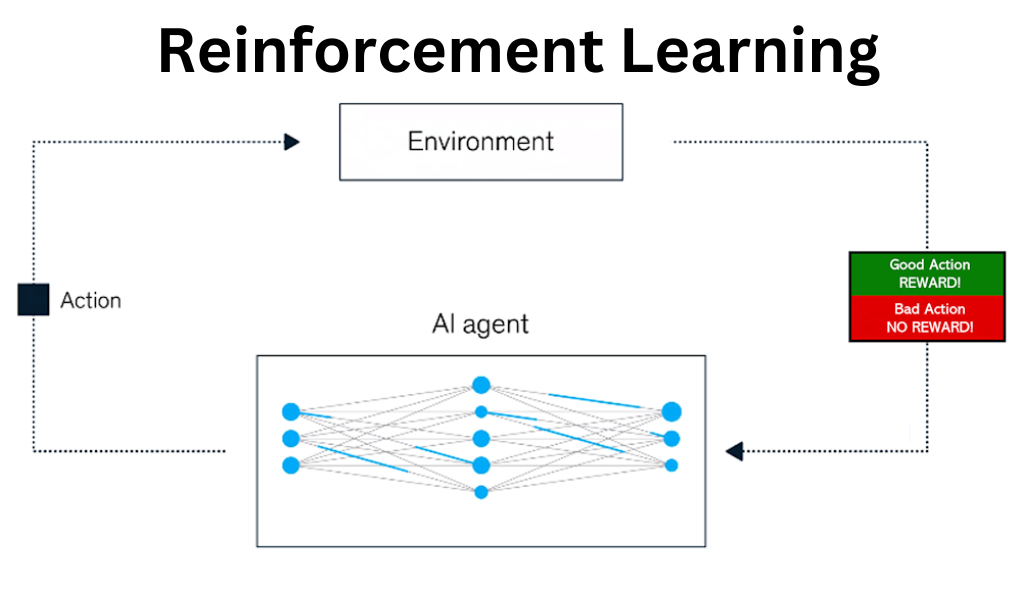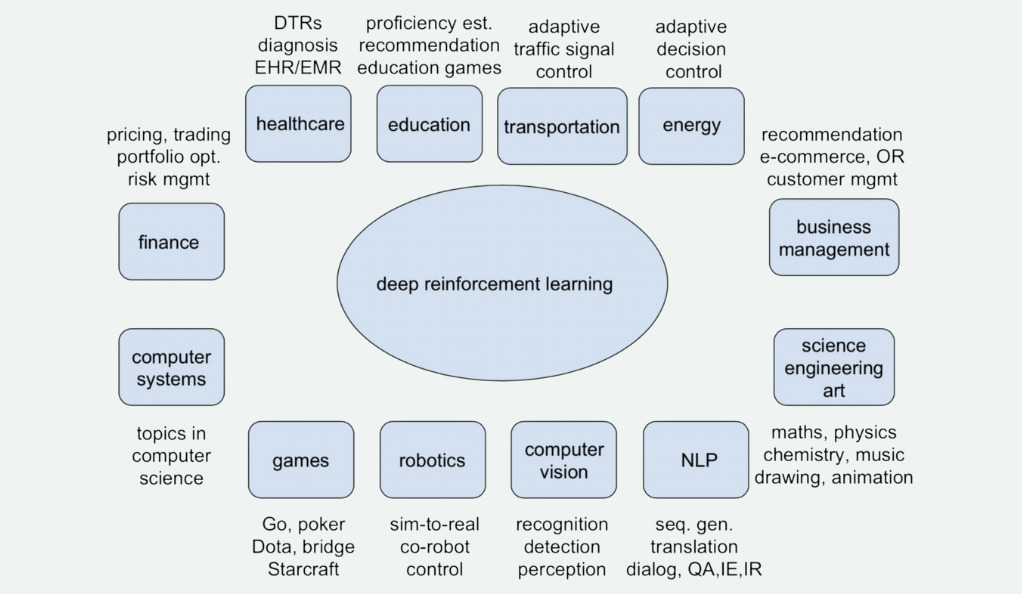Mastering the Game: How Reinforcement Learning is Shaping AI
Reinforcement Learning (RL) is not just another buzzword in the tech industry. It represents a significant leap in the world of artificial intelligence. By allowing machines to learn from their interactions with the environment, much like humans learn from experiences, RL is pushing the boundaries of what AI can achieve. From machine learning algorithms to ethical AI practices, this article delves deep into the transformative power of reinforcement learning and its profound impact on AI.
Introduction to Reinforcement Learning
Reinforcement Learning is a unique branch of machine learning where an agent learns by interacting with its environment. Instead of being fed data, the agent actively explores its surroundings, taking actions and receiving feedback in the form of rewards or penalties. This dynamic approach to learning is reminiscent of how humans and animals learn from their experiences, making mistakes, reaping rewards, and adjusting behaviors accordingly.

The beauty of RL lies in its simplicity. At its core, it’s a feedback loop where the agent observes the environment, decides on an action based on its current knowledge, and then receives a reward or penalty. This continuous cycle allows the agent to refine its strategies over time, optimizing for the best possible outcomes.
The Basics of RL Algorithms
- The Agent-Environment Interaction
Central to RL is the interaction between the agent and its environment. The agent observes the current state of the environment, decides on an action, and then receives feedback. This feedback, in the form of rewards or penalties, informs the agent about the efficacy of its action, guiding future decisions. - Exploration vs. Exploitation
One of the fundamental dilemmas in RL is whether the agent should explore new actions or exploit actions it already knows yield rewards. Striking a balance between exploration and exploitation is crucial for the agent’s long-term success. While exploration can lead to discovering better strategies, exploitation ensures immediate rewards.
How RL is Different from Other Machine Learning Techniques
Unlike traditional machine learning methods, RL is not dependent on labeled datasets. In supervised learning, algorithms are trained on a set of inputs and their corresponding outputs. In contrast, RL agents learn from trial and error, making decisions based on the feedback they receive. This makes RL particularly suited for complex environments where the right decisions aren’t always clear-cut.
Furthermore, while unsupervised learning seeks to find hidden patterns in data without explicit labels, RL is all about decision-making. It’s a dynamic process where the agent continuously interacts with its environment, adjusting its strategies based on the outcomes of its actions.
Applications of RL in Various Industries
- Healthcare
In the realm of healthcare, RL algorithms are making waves. They can assist in formulating personalized treatment plans by analyzing patient data and predicting which treatments are likely to be most effective. Additionally, RL can optimize hospital resource allocation, ensuring that patients receive timely care without overwhelming the system. - Finance
The finance sector is ripe for disruption with RL. Algorithms can manage portfolios, adjusting asset allocations in real-time based on market conditions. Moreover, RL can be instrumental in fraud detection, identifying unusual patterns and flagging suspicious transactions. - Entertainment
The entertainment industry is leveraging RL in various ways. From recommendation systems that curate content based on user preferences to game design where NPCs (Non-Player Characters) adapt to players’ strategies, RL is enhancing user experiences.

Ethical Considerations in RL
As AI technologies permeate our lives, ethical considerations become paramount. RL, with its autonomous decision-making capabilities, poses unique challenges. For instance, how do we ensure that RL agents make decisions that are fair and unbiased? Transparency is another concern. If an RL agent makes a decision, stakeholders should be able to understand the rationale behind it.
Moreover, there’s the risk of RL agents learning undesirable behaviors from biased data or feedback. Ensuring that the learning environment and the feedback loop are free from biases is crucial to prevent the perpetuation of harmful stereotypes or behaviors.
Challenges in Implementing RL
While RL holds immense promise, it’s not without challenges. One of the primary hurdles is the need for vast amounts of data. For an RL agent to make informed decisions, it needs to have interacted with its environment extensively. This can be computationally intensive and time-consuming.
Additionally, the dynamic nature of RL means outcomes can sometimes be unpredictable. Ensuring stability and reliability, especially in critical applications like healthcare or finance, is of utmost importance.
The Future of RL and AI
The potential of RL is vast. As computational power increases and algorithms become more sophisticated, we can expect RL to play an even more significant role in shaping the AI landscape. The dream of creating truly autonomous systems, which can learn and adapt without human intervention, is inching closer to reality.
Moreover, as industries recognize the value of RL, we’ll see more investments and research dedicated to pushing the boundaries of what’s possible. From smart cities that adapt to their inhabitants’ needs to personalized education systems that cater to individual learning styles, the applications of RL are limitless.
RL’s Impact on AI Research
The success stories of RL, like Google’s DeepMind mastering the game of Go, have invigorated AI research. Researchers are now more than ever motivated to explore the intricacies of RL algorithms, making them faster, more efficient, and adaptable to a wider range of real-world problems.
Furthermore, the interdisciplinary nature of RL means that insights from fields like neuroscience, psychology, and economics are enriching AI research. This cross-pollination of ideas is leading to more holistic and robust RL algorithms.
Case Studies: Success Stories of RL in Action
The prowess of RL is best illustrated through real-world applications. Google’s DeepMind, with its RL algorithms, not only mastered the game of Go but also showed superhuman performance in a range of video games. Similarly, Tesla’s self-driving cars leverage RL to navigate complex traffic scenarios, learning from millions of miles of driving data.
Another notable example is in the field of robotics. RL algorithms are enabling robots to learn tasks like folding laundry or assembling furniture, tasks that were previously deemed too complex for machines.
Conclusion: The Ever-evolving World of AI and RL
In the grand tapestry of AI, Reinforcement Learning shines as a beacon of innovation. Its ability to mimic the human process of learning through interaction makes it a formidable tool in the AI arsenal. As we continue to explore the depths of what machines can achieve, RL will undoubtedly be at the forefront, guiding us into a future where AI systems are not just smart but also adaptive and autonomous.
FAQs
Reinforcement Learning stands apart from other machine learning techniques due to its focus on decision-making through interaction. While supervised learning relies on labeled data to train algorithms and unsupervised learning seeks patterns in data without explicit labels, RL is a dynamic process. Agents in RL learn from trial and error, continuously adjusting their strategies based on the feedback they receive from their environment.
Reinforcement Learning is revolutionizing healthcare in multiple ways. By analyzing vast amounts of patient data, RL algorithms can predict which treatments are likely to be most effective for individual patients, leading to personalized care. Additionally, in hospital settings, RL can optimize resource allocation, ensuring that medical facilities run efficiently. This can lead to reduced wait times for patients and better utilization of medical equipment and staff.
Absolutely. Ethical concerns with RL revolve around fairness, transparency, and potential biases. Since RL agents learn from their environment, there’s a risk of them picking up and perpetuating biases present in the data or feedback they receive. Ensuring that RL agents make decisions that are unbiased and fair is crucial. Additionally, stakeholders should have the means to understand and interpret the decisions made by RL agents, emphasizing the need for transparency.
Implementing RL comes with its set of challenges. The need for vast amounts of data and extensive interactions with the environment means that RL can be computationally intensive. This requires significant computational resources, which might not always be readily available. Additionally, the dynamic nature of RL, while its strength, can also lead to unpredictability. Ensuring that RL agents behave reliably, especially in critical applications, is paramount.
Reinforcement Learning is pushing the boundaries of what AI can achieve. With its focus on learning through interaction, RL is leading the charge towards creating truly autonomous systems. As computational power grows and algorithms become more sophisticated, RL will play an even more significant role in AI. From industries like healthcare and finance to areas like research and entertainment, RL’s influence is pervasive, heralding a future where AI systems are adaptive, intelligent, and ever-evolving.
